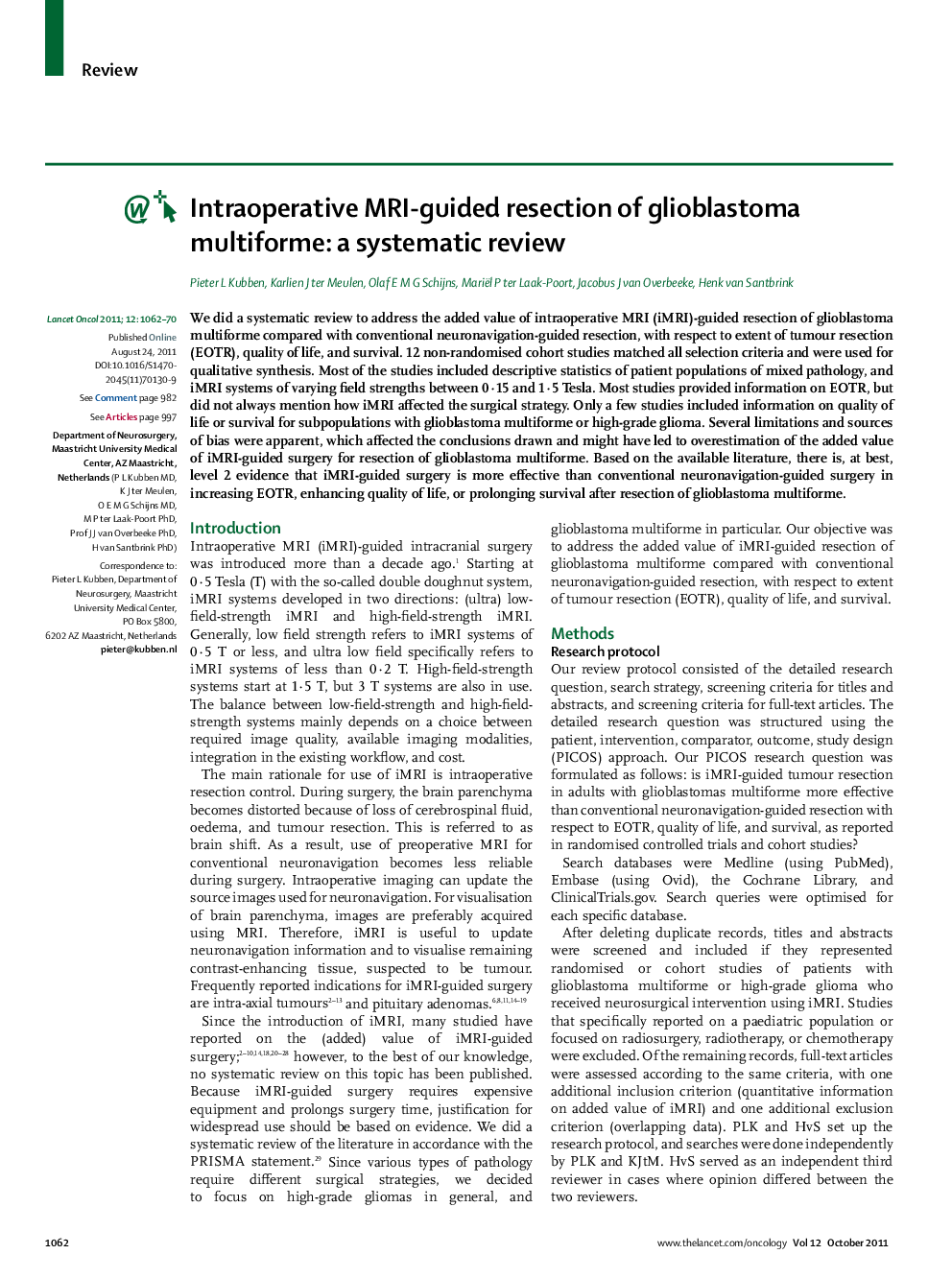| Article ID | Journal | Published Year | Pages | File Type |
|---|---|---|---|---|
| 3995015 | The Lancet Oncology | 2011 | 9 Pages |
SummaryWe did a systematic review to address the added value of intraoperative MRI (iMRI)-guided resection of glioblastoma multiforme compared with conventional neuronavigation-guided resection, with respect to extent of tumour resection (EOTR), quality of life, and survival. 12 non-randomised cohort studies matched all selection criteria and were used for qualitative synthesis. Most of the studies included descriptive statistics of patient populations of mixed pathology, and iMRI systems of varying field strengths between 0·15 and 1·5 Tesla. Most studies provided information on EOTR, but did not always mention how iMRI affected the surgical strategy. Only a few studies included information on quality of life or survival for subpopulations with glioblastoma multiforme or high-grade glioma. Several limitations and sources of bias were apparent, which affected the conclusions drawn and might have led to overestimation of the added value of iMRI-guided surgery for resection of glioblastoma multiforme. Based on the available literature, there is, at best, level 2 evidence that iMRI-guided surgery is more effective than conventional neuronavigation-guided surgery in increasing EOTR, enhancing quality of life, or prolonging survival after resection of glioblastoma multiforme.
